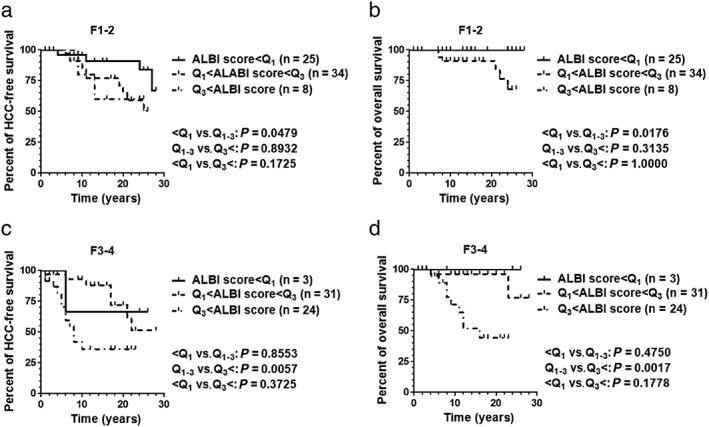Figure 9.

Prevalence of hepatocellular carcinoma (HCC) and overall survival stratified by baseline liver fibrosis staging. Differences in HCC prevalence and overall survival depending on albumin–bilirubin (ALBI) score were also evaluated under stratification by baseline liver fibrosis stage. The 125 patients were divided into two smaller cohorts: 67 patients with non‐advanced fibrosis (F1–2) and 58 patients with advanced fibrosis (F3–4). (a,b) Using the quantile values Q1 = −2.773 and Q3 = −2.215, 25 patients in the smaller ALBI score group experienced longer HCC‐free survival (a) and overall survival (b) than the 34 patients in the middle ALBI score group in the non‐advanced fibrosis stage (F1–2) cohort (P < 0.05). HCC‐free survival of eight patients in the greater ALBI score group did not significantly differ from those of other two groups (P > 0.05) (a). Overall survival curve for the greater ALBI score group was overlapped with that of the smaller ALBI score group, yielding no significant difference with other groups either (P > 0.05) (b). (c,d)In the advanced fibrosis stage (F3–4) cohort, 31 patients from the middle ALBI score group finished the observation with longer HCC‐free survival (c) and overall survival (d) compared to the 24 patients in the greater ALBI score group (P < 0.05). The smaller ALBI score group consisted of three patients and its HCC‐free curve and overall survival curve were not significantly different from those of other groups (c,d). Data were analyzed using the log–rank (Mantel–Cox) test. P‐values <0.05 were considered statistically significant.
